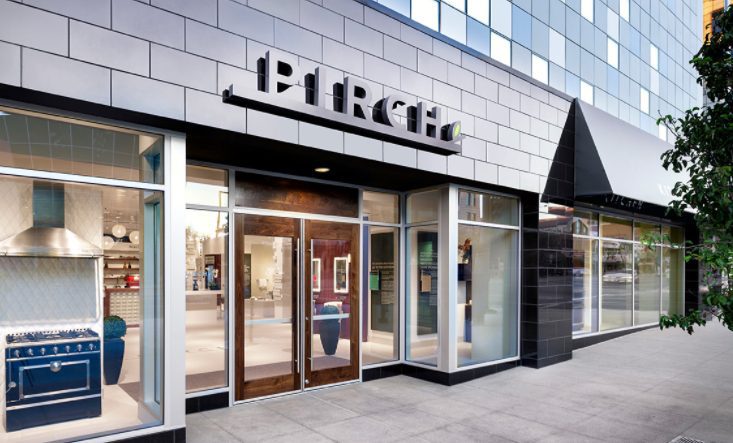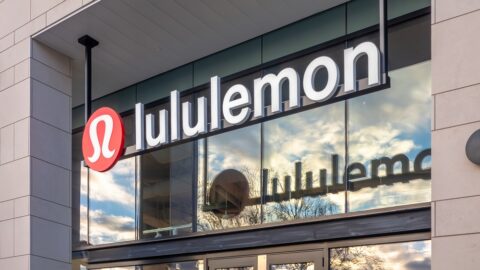Pirch, an upscale appliance and kitchen retailer that was hailed as an avatar of experiential retail, recently announced it would be closing most of its stores as it seeks to overhaul its operations. Joe Hasenzahl, Principal Consultant for Retail Technology Strategy at HighStreet, provided this exclusive analysis of the Pirch phenomenon, as well as its strengths and weaknesses, to Retail TouchPoints.
Those of us who’ve been evangelizing, proselytizing and preaching “experience” as the savior of brick-and-mortar collectively gasped when the news broke last week that one of the industry’s shining lights, Pirch, was shuttering stores. The announcement of the impending close of most of their much-lauded luxury showrooms both shocked and confounded us. How? What could possibly have caused such a rock solid, industry-inspiring store experience to suffer the same fate of their less enlightened brand brethren?
Pirch is different. We ‘experience design’ people beat our drum at a near constant rhythm, never missing an opportunity to hold them up as the model of the future. No one — either in the headlines or in our own heads — could have seen this coming. They apparently did everything right and the industry joined us with their accolades. Together, we had exalted them as the answer to retail’s ills, treading first where most hadn’t dared. To find a chink in their armor required some serious investigation, but to not do so would be a travesty. They deserve the respect of our time and we have much to learn from their lessons.
Was it the store?
- Gorgeous showrooms that obey all of Paco Underhill’s strategy sensibilities, as well as the most important tenets of outstanding customer experience;
- Expansive decompression zones that give shoppers a moment to catch their breath and take in the Pirch corporate values, artfully inscribed on the architecture and clear that they are about one key emotion: Joy. There is actually a small plaque with the CEO’s name and his direct phone line to call if they don’t deliver on their commitments. Last time we asked, only a handful had taken him up on it;
- A dedicated barista delivering a coffee-infused greeting ensures a welcome free from the dogma or dread of a salesperson’s rote cold-opener;
- High-end stoves, refrigerators and sinks plus bathtubs and faucets you can touch, try out and test. Even making available private showers accompanied by the softest robe imaginable. Water runs out of faucets, flames come out of stoves and themed scents secure the mood of the season. Was that the smell of bread baking? Or roasted leg of lamb? Of course, one of the executive chefs on staff whipped up something delightful or was with a customer leading a hands-on tutorial of that fabulous stove;
- A management team plucked from luxury retailers, not the home improvement category, to ensure that the in-store experience sets the tone for excellence and personal care;
- Talented salespeople, many from backgrounds such as interior design or architecture, genuinely driven to provide knowledgeable solutions and accurate answers;
- Subject matter experts ready to help with a snap, never making the shopper feel stupid or declassee;
- A legendary linger-time within the showroom that averages two hours and a sales-per-square-foot second only to the Apple store; and
- Service after the sale delivered by in-house installation and project management teams, many of whom were recruited from the U.S. military’s elite and installed, literally, with “white gloves.”
What about the business infrastructure?
- Investment by L. Catterton gave them breathing room to get a U.S. expansion strategy right;
- A new store in Austin, Texas opened the door to explore a smaller footprint;
- Back-of-the-house systems were being migrated to a new ERP to standardize…well, all the things an ERP is supposed to standardize;
- A digital agency was brought in to work some in-store technology magic;
- A difficult decision was made to re-centralize project management and support services back at the corporate office in San Diego, indicating only bigger plans and how important strategic scale was to the growth plan;
- AND…a new CEO. Fresh from a renowned luxury brand, Luxottica, Andrea Dorigo was brought on board to stabilize and grow the business.
Seemingly, nothing could have been done differently to improve on either.
That leaves the business model…
Great experiences in retail can’t recover from a bad product much in the same way a great waiter can’t recover from bad food. So we must ask if the store shone, the support was rock solid, and the product + experience ecosystem was spot-on, was the cancer much deeper?
Pirch has always positioned itself as a brand experience. The products, while not necessarily exclusive, are still expensive and come from all the right pedigreed brands.
Did Pirch gamble that shoppers who could afford these high-end product lines would not be price-sensitive and avoid showrooming? Would affluent shoppers come to a mall to buy appliances? Who was the ultimate decision-maker, not the check-writer? Unpacking their customer profile to try to reverse engineer their business model certainly provides us clues.
- According to the Houzz Renovation Barometer for 2017, clients purchasing high-end products dropped from 35% in 2016 to 30% in 2017 — that’s still a substantial slice of the pie and squarely in Pirch’s customer acquisition profile;
- Kitchen and bathroom renovations still account for almost 50% of projects, so it feels like the market can definitely absorb the volumes Pirch would need to be successful; and
- In all of the markets that Pirch has a presence, reports indicate that backlogs for designers linger at four weeks, architects around six weeks and general contractors at a whopping seven weeks. This shortage of professionals to meet the ongoing demand evidence that the renovation market is thriving and renovation professionals have the opportunity to be selective about the projects and customers they want.
So, if Pirch’s model is to target their showrooms for homeowners specifically, how does that reconcile with the business reality that drove their sales teams to designers, architects and contractors rather than to the end consumer? The average transaction in Pirch is a little over $8,000. It’s hard to see how the traffic their stores generate could justify that kind of showroom — and the army of salespeople required to hit the right revenue targets. The math simply doesn’t compute.
Wait…come again?
Let’s break it down.
Pirch’s salespeople have to go to the decision makers to get business — follow the money, so to speak.
Pirch’s model has always been to go after homeowners who could not only afford a designer but also wanted one. A customer who covets the finest, latest and shiniest, but not the burden and drudgery of multiple resources to debrief, direct, decide and deliver. They want to outsource it. To their designers. You know, the people Pirch wasn’t exclusively targeting or supporting. The showroom was designed for the end user, yet the Pirch model works best when they’re not the ones being served.
Think about it. Does the design professional really care whether the stove lights and the faucet works? Are they coming in for free cooking classes? Likely, no. Conversely, would they gravitate to a workspace with free coffee, helpful sales staff and plenty of co-working space? You bet. Would they have still bought from Pirch simply based on their legendary service and installation — but without the overhead-heavy showroom? Definitely worth considering.
But let’s get one thing straight — customers have loved Pirch like a duck loves water. They upped the ante of exactly how much someone can love a store; the everyday visitor just doesn’t buy enough to support such a monumental per-square-foot cost.
Applauding A True Brand Braveheart
Frankly, we admire Pirch’s co-founder, Jeffery Sears, as the Steve Jobs of retail store experience. Go read any of his articles, interviews and thoughtful musings. We’ve spent time with him and shared sincerely that he should document his philosophy towards customer experience with tomes that would one day be referred to in college textbooks. His dream hit a speed bump, but his philosophy ignited a movement.
So what now? Should Pirch follow suit with Nordstrom’s new product-less showroom launching next month and open tiny galleries where the shopper and designer can easily stop in to evaluate specific products curated just for them? This may work for dresses, shoes and earrings, but will it drive stove, bathtub and refrigerator sales? Not sure, but we’ll be watching.
Experience Evangelists take a breath. All is not lost. We mourn the loss (or at least the diminished reputation) of our beloved Pirch as a muse, but we are still on the right track. Instead of espousing “experience” as the answer to all of brick-and-mortar’s ills, we must include it in the ecosystem of successful retail. As much as we are sick of the dogma of Price, Product, Promotion and whatever the hell that last P was, Experience without product and a successful business plan is just a spit in the wind — much like a dream without a plan is just a wish.
But Jeffery, thank you for going first. You’ve inspired us like no other and we hope to walk proudly in your footsteps.













